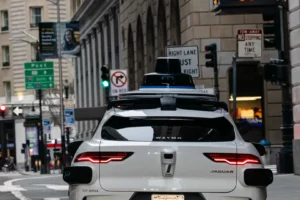The Government has responded to a Commons Transport Committee report into driverless cars, by insisting “safety is a priority” for its rules around the technology.
In the report, the Committee had commented: “While it is widely assumed that self-driving vehicles will prove safer than human drivers, this is not a given. Optimistic predictions are often based on widespread self-driving vehicle usage that is decades away, or assertions about human error that ignore other risks. Safety must remain the Government’s overriding priority as self-driving vehicles encounter real-world complexity. Given this, we question the Government’s proposed ambition that self-driving vehicles must be as safe as a competent and careful human driver. This is too weak and too vague. The Government should set a clearer, more stretching threshold.”
However, responding, the document says:
The Government does not accept the Committee’s view on the proposed safety ambition.
Safety is a priority for the Government and is a focus of the recently announced Automated Vehicles Bill. As set out in the Bill, it is the Government’s intention to publish a statutory ‘Statement of Safety Principles’ which will support the safety ambition and which will be used in the assessment of the safety of self-driving vehicles.
CAM 2025 highlighted that balancing safety, innovation and public expectations is challenging, and must be considered carefully in the context of technologies that are still under development and about which public understanding is still being developed. Setting too high a level of ambition could have the effect of stifling the introduction of the technology and needlessly delay near-term safety improvements. A lower level of ambition would not deliver a publicly acceptable level of safety and risk undermining the introduction and uptake of the technology. It is the Government’s view that a competent and careful driver is safer than the average human driver and that a level of safety equivalent to that of a competent and careful driver it is an appropriate ambition at this time.
As set out in CAM 2025, Government recognises that no technology is infallible and that new technologies generally bring new risks and challenges which must be managed and met. Government also recognises that road safety is not the result of vehicle technology alone, which is why CAM 2025 set out a ‘safe system’ approach aimed at embedding safety throughout the development, deployment and use of self-driving vehicles. This includes the development of detailed, clear and verifiable technical requirements for pre-deployment approval and in-use operation. These technical requirements are being developed as part of the CAVPASS programme, in discussion with stakeholders.
The response also looks at recommendations around how the introduction of self-driving vehicles is responsive to the wider population and meets the UK’s transport goals, driver skills and data, roadworthiness, liability and insurance implications.
Writing on LinkedIn, driverless safety expert Prof Nick Reed wrote:
“Fascinating government response today to the UK Parliament Transport Committee’s criticism that their stated ambition for the safety of self-driving vehicles was “too weak and too vague”
“The government’s rejection of the Committee’s recommendation reflects two positions:
“too weak”?
1. The aim that a self-driving vehicle should be “at least as safe as a competent and careful driver” and that achieving this would deliver safety performance that is significantly safer than the average human driver.
“too vague”?
2. That “detailed, clear and verifiable technical requirements for pre-deployment approval and in-use operation” will be developed to ensure the required safety standard is achieved.
“Delivering 2 to be able to show that 1 has been achieved is a challenging but necessary step for real world, commercial deployment of self-driving vehicles. However, even if 1 is achieved, the types of crash that occur involving self-driving vehicles may be deemed publicly unacceptable.
“Lots of hard, collaborative work is needed to build trust and engagement from the communities that will be affected by self-driving vehicles and to create a regulatory framework that gives confidence in their safe and responsible operation. Let’s do this!”
(Picture – Yay Images)






















